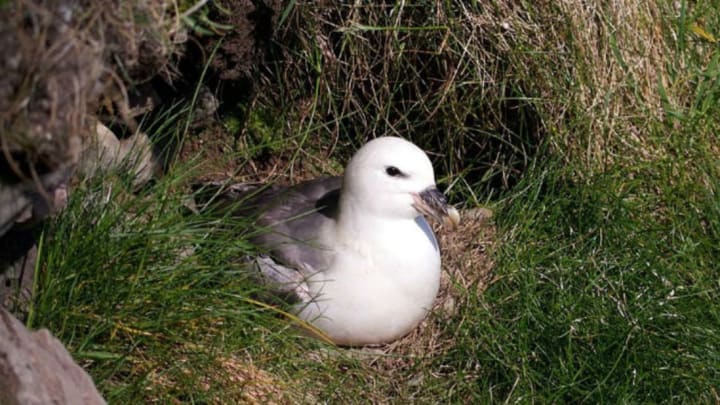You could call it karma: The garbage we dump into the oceans is literally coming home to roost. Ecologists have determined that nearly all seabirds ingest large quantities of plastic. As the birds return to shore and start pooping, the toxic chemicals from our trash begin to make their way back into coastal environments.
Seabirds are having a rough go of it at the moment. A recent study found that a full 90 percent of them are ingesting plastic garbage, and that number is only rising. “That was shocking,” study author Chris Wilcox told National Geographic. “Essentially, the number of species and number of individuals within species that you find plastic in is going up fairly rapidly by a couple percent every year.”
This is awful for the birds, and it’s not so great for the rest of us, either: Every animal has a role to play in its local ecosystem, and every element of that system is connected.
Ecologist Mark Mallory studies the effects of environmental stressors on Canadian coastlines. He’s especially interested in the niche occupied by Arctic seabirds like the northern fulmar (Fulmarus glacialis). The word fulmar comes from the Old Norse for “foul gull”—gull because that’s what they look like, and foul, because frightened fulmars vomit up a brightly colored, nasty-smelling oil. It’s fascinating (if gross) stuff, but Mallory is more interested in their poop.
Fulmars make their homes on coastal cliffs. They build their nests, raise their young, and generally poop all over the place. Historically, this has been a very good thing; the feces acts as a fertilizer, delivering nutrients like nitrogen and phosphorus to the seaside soil. “You get relatively lush conditions. It’s like an oasis,” Mallory told Smithsonian. But these days the fulmar fertilizer has some added ingredients: DDT, polychlorinated biphenyls (PCBs), mercury, and other contaminants.
Most of the plastics and chemicals filling our oceans aren’t poured into the ocean on purpose; they’re the result of industrial and agricultural runoff and poor waste management practices. Still, regardless of how they get there, they’re doing a lot of damage. Not only do the chemicals cling to pieces of seaborne plastic, but they also contaminate the food chain.
It starts at the bottom. Plankton and other microscopic ocean organisms absorb the chemicals. Those organisms are eaten by larger organisms, which are eaten by larger organisms, and so on up the food chain, all the way to fulmars. And with every step, the chemicals accumulate and concentrate, getting more and more toxic.
Then the fulmars bring their bellies full of chemicals back home, and relieve themselves all over the cliffs. Some of this waste is washed into freshwater pools, some of it seeps into the soil, and some of it is eaten. Fulmar guano is a prime nutrient source for algae and moss, but also for insects.
Then those insects are eaten by adorable little birds called snow buntings. The snow buntings and fulmars are eaten, too, and the contaminants go around and around, in a toxic circle of life.
Other scientists have confirmed Mallory’s findings in other coastal species. Veronica Padula, who studies seabirds at the University of Alaska, believes the chemicals may also be getting into the birds’ eggs, which are then eaten by foxes, eagles, and other predators—including humans.
“It’s actually quite scary, especially when you start looking at what these chemicals do,” Padula told Smithsonian. “You kind of want to find a bunker and hide.”
